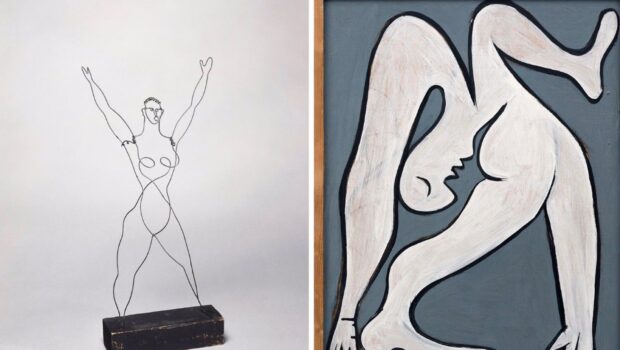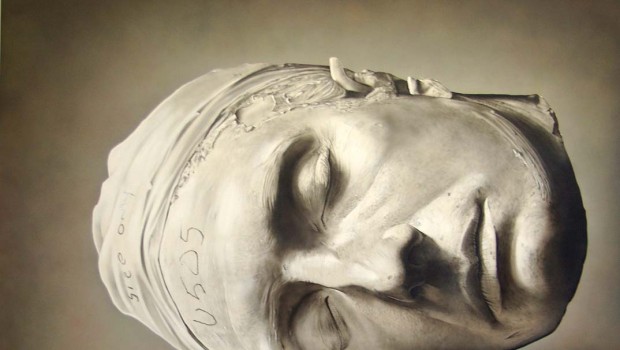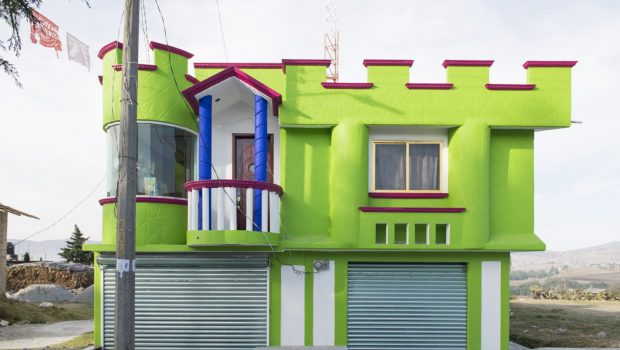Calder and Picasso: A Limitless Ingenuity
Calder, Picasso y la inventiva sin límites
Ana Girard
Calder-Picasso is a one-of-a kind exhibition currently on view at the Museum of Fine Arts Houston. This exhibit has captivated and awakened the curiosity of many, including connoisseurs and aficionados. Throughout the gallery, interesting stylistic and conceptual correlations can be found between the works of two great artists of the 20th century: Alexander Calder and Pablo Picasso. They both shared similar artistic interests which are highlighted in this exhibition.
Many of Calder’s artworks, commonly known as mobiles and stabiles, and Picasso’s works contrast and complement one another. This is because Calder and Picasso defied the traditional norms of art by experimenting not only with materials but also concepts such as the void, space, shape, density, movement, distortion, and volume, just to mention a few, creating abstract silhouettes with great presence.
As a child, Calder had already created toys and miniature figures like those of a circus. This equipped him to create his later acclaimed mobiles that move while suspended. He also created original drawings and sculptures using one continuous line, which requires great skill. Picasso, another natural genius, was not only one of the greatest representatives of Cubism, but he also experimented with the expressivity of lines, volume, and form as ways to depict the world that surrounded him. Even though Calder and Picasso were not really friends, they did know and admire each other, and they crossed paths more than once.
It is notable that both artists shared a deep interest in the human form and its corporeality. For example, the curvy contours in Picasso’s Nu Couche or Reclined Nude and Calder’s Croisière are prominent in the exhibition. Despite one being a painting and the other a wire sculpture, both display organic lines and contours that activate the void spaces giving them dimensionality and bringing them to life. These contours add an aspect of contortionism (like seen in the circus) and a sort of disfigured look to both artists’ works. These elements are also visible in Calder and Picasso’s Acrobat. However, these elements do not take away but give elegance and grace to the figures.
Many of the artworks in this exhibition present opposite characteristics. Picasso’s figures are voluminous and wide, while Calder’s are narrow and elongated. Nevertheless, they show various similarities. Part of the success of this exhibit is that viewers really enjoy the process of exploring the contrasts and associations by themselves.
When standing in the galleries, it seems that everything emanates movement and has an active presence. It is the juxtaposition of Calder and Picasso’s works side by side that makes this an original exhibition and that creates a special synergy worthy of the entrance ticket.
Surprisingly and at the end of the exhibition, a monumental sculpture by Calder awaits visitors. This work is representative of the large-scale creations that both Calder and Picasso worked on during the mature stages of their careers to be exhibited outdoors and publicly. In this extraordinary exhibition, Calder and Picasso’s multifaceted works remind us that when it comes to art, imagination and ingenuity are limitless.
*Cover Images: Alexander Calder Acrobat 1929 . Pablo Picasso Acrobate, 1930
Calder-Picasso es una singular exposición recientemente inaugurada en el Museum of Fine Arts Houston que ha logrado cautivar y despertar la curiosidad del público conocedor y aficionado. A través de la selección en dicha muestra, se pueden observar las varias correlaciones estilísticas, conceptuales y los intereses artísticos de dos grandes artistas del siglo XX: Alexander Calder y Pablo Picasso.
Muchos de los objetos de Calder comúnmente conocidos como mobiles y stabiles y las obras de Picasso se contrastan y se complementan entre sí. Esto es debido a que Calder y Picasso desafiaron las normas tradicionales del arte por medio de la experimentación e innovación no solo con materiales, sino con conceptos como el espacio, el vacío, la forma, la densidad, el movimiento, la distorsión, y el volumen; creando obras con siluetas abstractas y con gran presencia.
Desde pequeño, Calder ya creaba juguetes y figuras miniatura como de circo. Esto sin duda le preparó para crear sus aclamadas obras móviles que suspendidas en el aire generan movimiento. También el artista creó ingeniosos dibujos y esculturas utilizando una sola línea continua lo cual no es fácil. Picasso, otro genio por naturaleza, ademas de ser uno de los mas grandes representantes del Cubismo, experimentó mucho con la expresividad de las líneas, el volúmen y formas como medios para representar la vida que le rodeaba. Aunque Calder y Picasso no fueron grandes amigos, si se conocían, gozaban de una admiración mutua y cruzaron caminos mas de una vez.
Es notable que ambos artistas compartían un gran interés por la corporalidad y la figura humana. Por ejemplo, en la exhibición resaltan los contornos curvos de obras como Nu Couche ó Desnudo Reclinado de Picasso y la obra Croisière ó Crucero de Calder. Aunque una es un óleo sobre lienzo y la otra una escultura de alambre, en ambas se pueden apreciar las líneas y contornos orgánicos que de alguna manera activan los espacios vacíos dándoles dimensionalidad y vida. Estos contornos le añaden un aspecto de contorsionismo o un aspecto desfigurado pero creativo y elegante a las obras de ambos artistas. Estas y otras obras como Acróbata se pueden contrastar debido a que presentan características opuestas. Por ejemplo las figuras de Pablo Picasso se ven voluminosas mientras que las de Calder son mas angostas, alargadas, y sin masa, sin embargo muestran diversas e interesantes similitudes. Parte del éxito de esta exposición es que muchos espectadores disfrutan el tratar de explorar dichos contrastes y asociaciones por sí mismos.
Al ver esta increíble muestra pareciera que todas las obras emanan movimiento, actividad, y una gran presencia en todo momento. Sin duda alguna, es la yuxtaposición de Calder con Picasso lo que hace esta exposición original y crea una sinergia muy especial que vale la pena el boleto de entrada.
Al final de la exposición, una monumental escultura de Calder toma a los visitantes por sorpresa, pues es representativa de las creaciones a gran escala que ambos artistas llevaron a cabo en la etapa madura de sus carreras para ser exhibidas al aire libre. En esta extraordinaria exhibición, las obras multifacéticas de Calder y Picasso nos recuerdan que en cuanto al arte se refiere, la imaginación y el ingenio no tienen límites.










